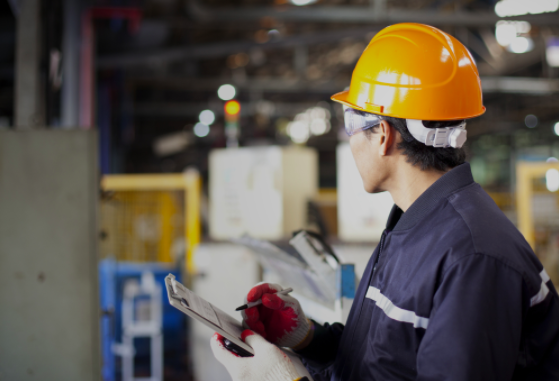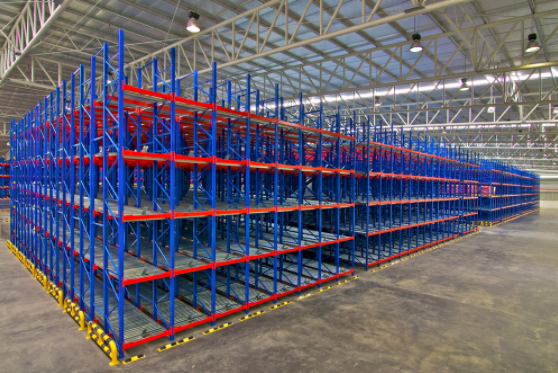Who Performs Rack Inspections at Santa’s Warehouse?
It’s the most wonderful time of the year, but it would be a dangerous time if Santa didn’t have some kind of safety system
Being Santa can’t be easy. The man in red isn’t just the CEO of the biggest non-profit organisation in the world; he’s also the face of Christmas itself. The bulk of his work happens on Christmas Eve, but Santa’s operational facility would need to work all year round in order for supply to meet demand.
And demand is high! According to the World Bank, children under the age of 14 make up 26% of the total population. Not all of those children will get presents, of course. Some will be on Santa’s naughty list and others might not believe in Santa. Even still, that still leaves Santa with 1.5 billion presents to make a year.
How Does Santa Do It? Making the Numbers Work?
Making that many presents in a year is doable with the right workforce size. Over the course of 10 years, Apple has sold over 1.2 billion iPhones. With a workforce ten times the size of Apple’s, Santa could create a similar number of a iPhones in 10 years. The issue, however, is that Apple only makes Apple products. Santa’s elves need to make a whole variety of products for a whole variety of well-behaved children.
This too is feasible with the right-sized workforce. After all, Amazon has twice as many employees as Apple and, with 2.1 million employees, Walmart has nearly ten times as many employees as Amazon. Put that all together and it’s not a stretch to imagine around a couple million elves making 1.5 billion presents in a year.
The real issue, though, is not production. The real issue is storage. We’ve long known that Santa has a workshop full of elves who produce his presents and that he delivers them on a sledge drawn by magical reindeer. No-one is disputing that.
The question is: how and where can you safely store 1.5 billion presents? This is where rack inspections and rack inspection safety come into play.
Rack Inspections Aren’t Done By Magic
The first thing to figure out is how big a warehouse which stores 1.5 billion presents needs to be. Or rather, if Santa needs more than one warehouse, how many warehouses will he need?
Amazon provides us with an answer here. In 2014, Amazon sold five billion products. That’s several times the number of presents which Santa delivers on Christmas Eve. Still, unlike Amazon, Santa needs to be able to store all 1.5 billion presents in one place and deliver all of them in one day.
Even still, the two business models are certainly comparable. With that in mind, how many warehouses does Amazon have and how big are they? Amazon has around 130 warehouses worldwide and over 70 of them are in the US. Based on those figures, Santa would need around 45 Amazon-sized warehouses in order to store 1.5 billion presents.
This would mean a lot of rack inspections. However, once again, if Amazon can do it, Santa can, too.
Who Performs Rack Inspections at Santa’s Warehouse?
Being Santa’s only employees, elves would seem like the obvious choice here. However, it’s not as simple as that. HSE recommends regular rack inspections from competent staff members, so these could be performed by elves, but it also recommends annual rack inspections from a SEMA approved racking inspector.
Of course, Santa’s warehouse is not in the UK. However, it’s fair to assume that it’s in the EU. The tradition of Santa Claus is a Nordic one and Finland, an EU country, claims that Lapland is the home of Santa.
As such, rack inspections in Santa’s warehouse would need to come under EU law. This means — according to EU standard EN 15635 — that expert rack inspections would also need to be carried out at least once every 12 months alongside the regular rack inspections performed by Santa’s elves.
This isn’t problematic for a business like Amazon, whose secrecy isn’t important. For Santa, though, secrecy is vital for his brand, as well as the magic of Christmas. As such, we can only assume that the Finnish inspectors who visit Santa’s warehouse do so under strict instruction that they never reveal his the location of his secret warehouse.
Who exactly gets the prestigious honour of performing a rack inspection at Santa’s warehouse is unknown. However, it’s worth pointing out that there is only one SEMA approved racking inspector in the whole of Finland…
For a rack inspection or rack inspection training from a SEMA approved racking inspector, contact Storage Equipment Experts today. Whether your business is in Ireland or the UK, we offer complete coverage. Sadly, we don’t do visits to the North Pole…




